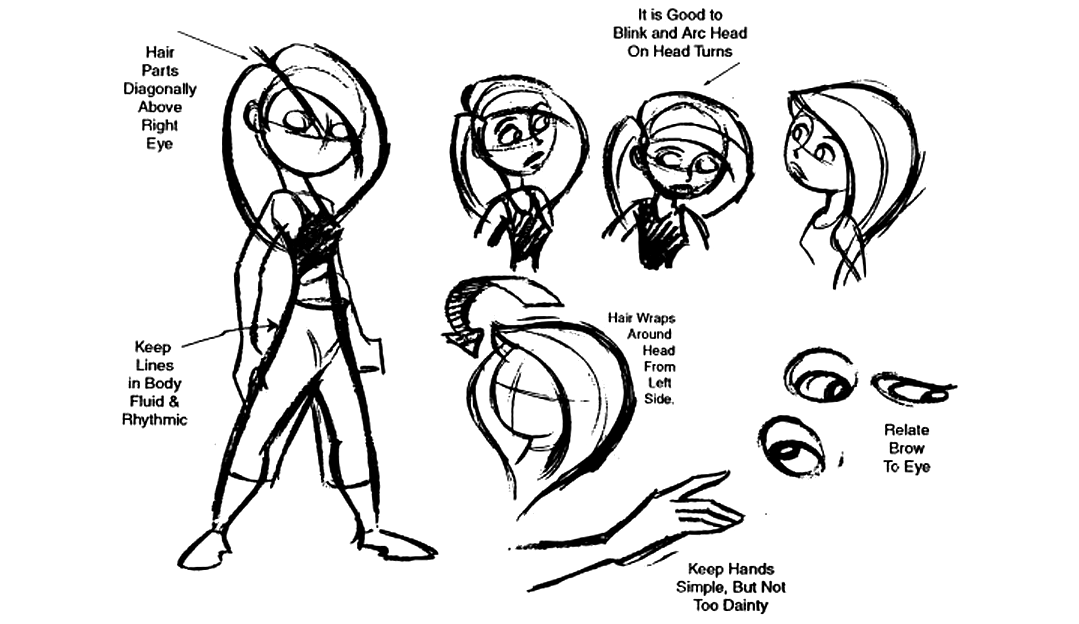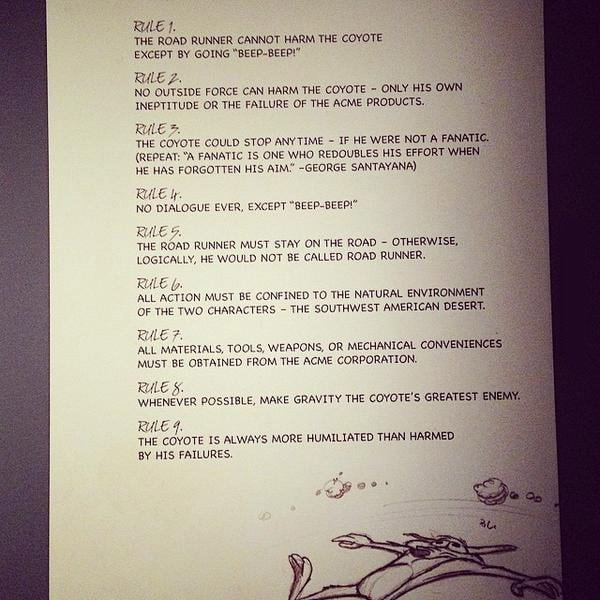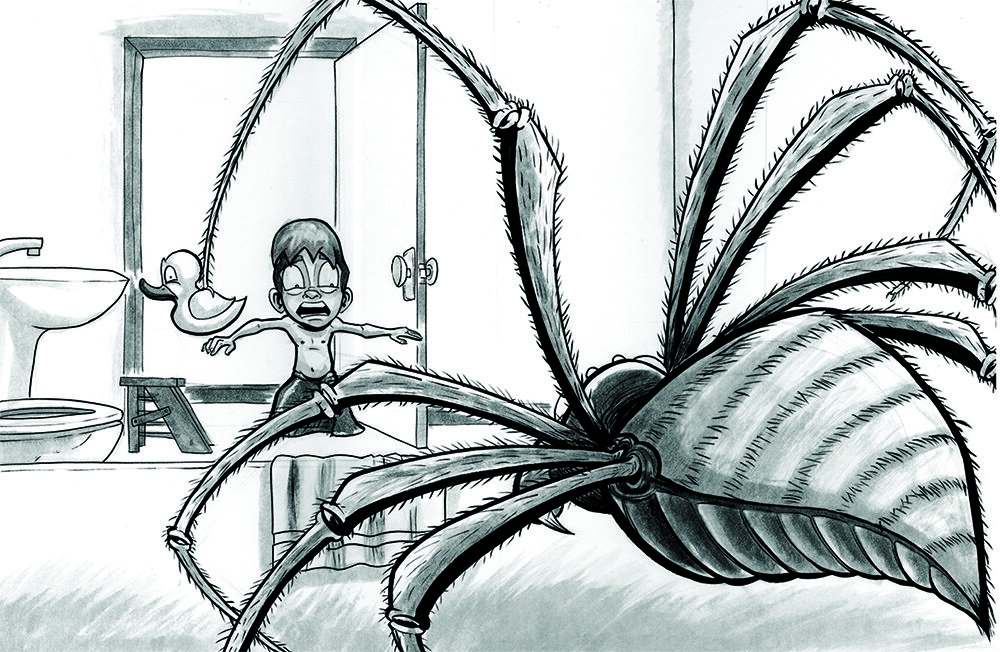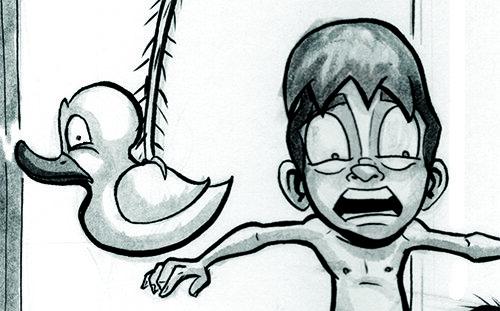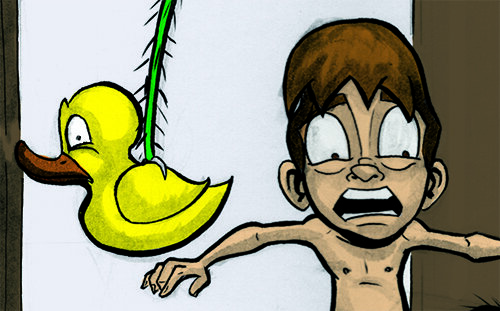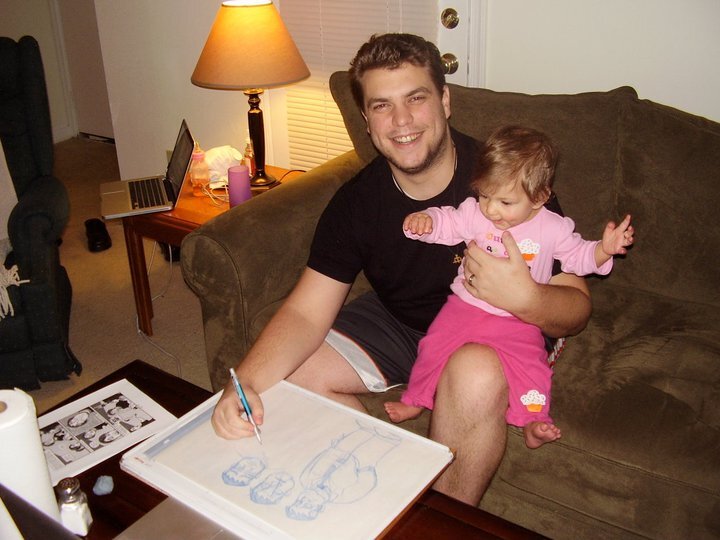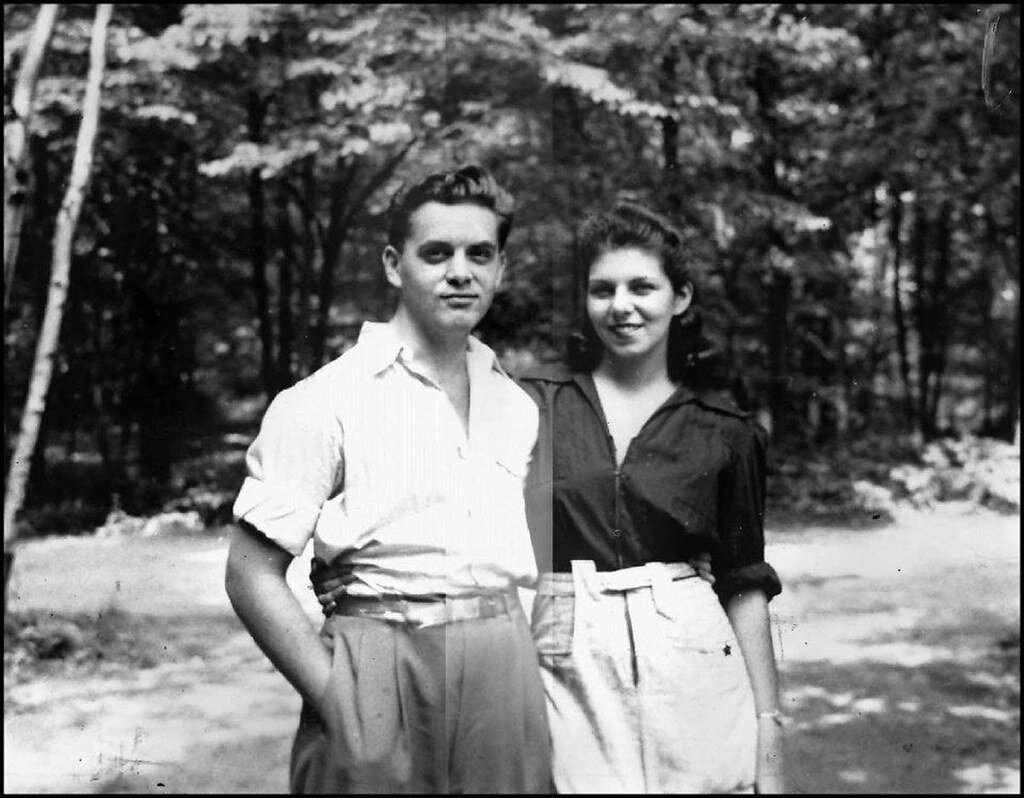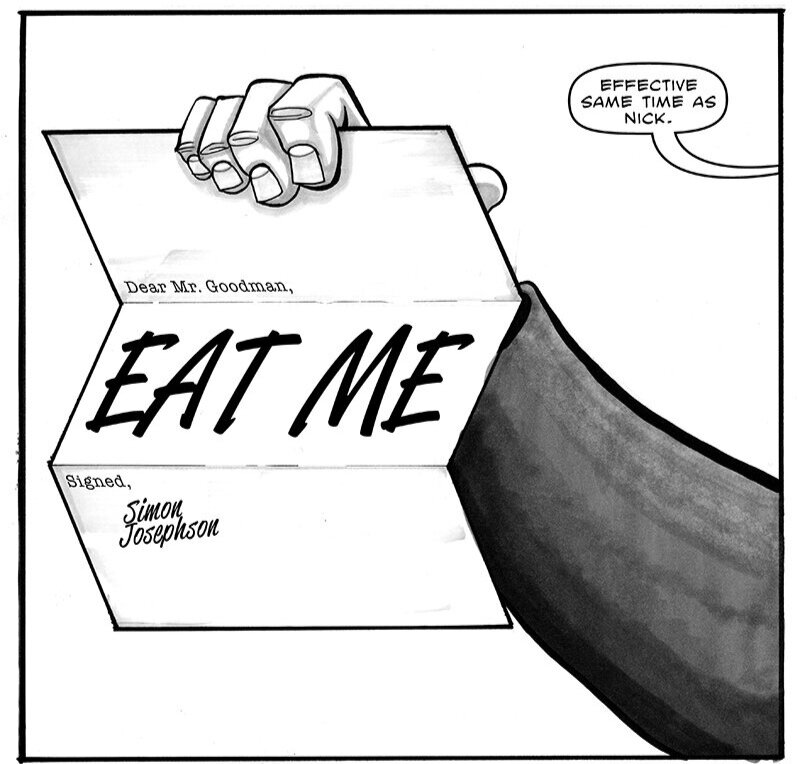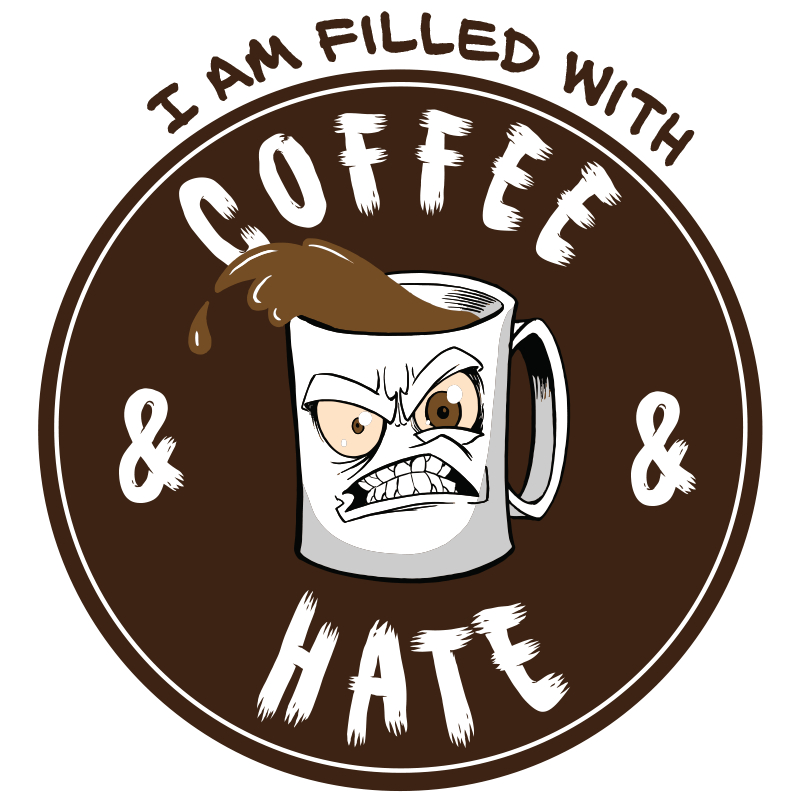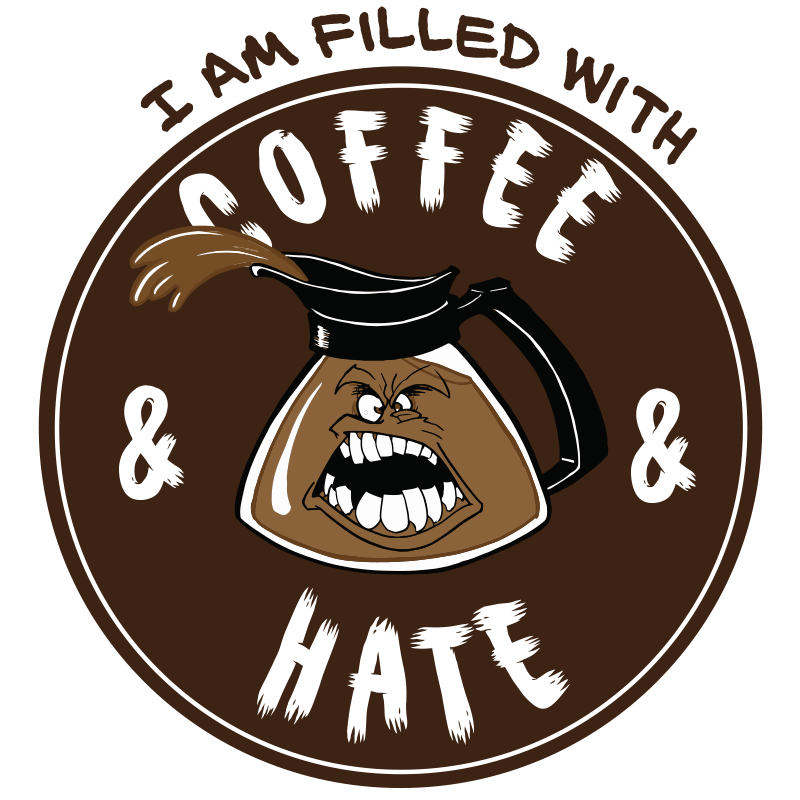I’ve been slowly writing and testing out my own OSR Roleplaying Game I call Battle Jacket. This is its development blog. [Part 1 Here] [Part 2 Here]
Recap: I set out to make my own OSR game by stealing the Mörk Borg rules-set and adding a touch of homebrew to it. I was going to design a small zine, sell a few copies to my friends, and then be done with it. Then the project began to take on a life of its own…
One of the suckiest things about being a creative is that the best thoughts come at the worst times. I had a long day at work. The drawing board fought me all day. My domestic duties at home took up the remainder of my time and energy. I lay in my bed positively whooped when inspiration struck suddenly and angrily. I pulled out my phone and sleepily scrawled the following note:
For those not in a position to read the image, I typed out:
Demon Gods:
Quantaar
Cephelogaar
Chammakkaar
Shamrazhnagaar
and
Timothy
It was one of those moments where the joke comes almost fully formed. It is an old old joke format, but I find it tried and true, and furthermore it makes me laugh every time. Six Demon Gods, all with very demony sounding names, except for one painfully generic name. And who is the worst of all of these Demon Gods? I’m sure you can guess.
Also, these names constitute the first lines to an official style-guide.
What is a “Style Guide”?
An indispensable document that can take many forms. I am most familiar with style-guides used in animation, comics, and writing (usually for TV). They exist to keep all the creatives of a project working on the same page, and more importantly, to keep the internal world of the creative work consistent. In animation, style-guides are usually created by character designers and animation directors so that story-boarders and animators know what creative decisions have been made, and how to keep them consistent.
Style guides for writing include notes about characters, motivations, over-arching plot, what the story is actually about, and most importantly, the rules of the world.
Even when working alone, a style-guide is hugely important both visually and writing-wise. Ever read a comic, a novel, or watch a show and a main character does something very out of character? Hate it when you think you have a horror mystery figured out, but the main creator seems to keep changing things up? The lore gets bigger and bigger, the plot gets more convoluted and makes less sense? That’s what happens when a writer does not create or adhere to their own style-guide. The work ultimately devolves from an interesting/compelling story into schlock. The creator is no longer telling you a story, they’re just holding your attention, and they’ll continue making things up just to keep it. (Think Five Nights at Freddy’s, the Walking Dead, or Lost.)
For writing, style guides are usually a short bullet pointed list of rules. In general, the bigger work, the fewer the rules, but the more rigidly the rules must be adhered to. One of the most famous examples comes from the legendary Chuck Jones’s guide on Wile E. Coyote. Chuck was one of the best animators, designers, and directors of his day, but it was his discipline that made him a timeless legend.
The initial power of any creative work comes from a compelling concept, but the staying power and most true gauge of quality comes from the discipline of sticking to the style-guide.
As a brief aside, comics and illustration have a bit of wiggle-room in how closely the first design is adhered to. It is expected that the shapes will mature as the artist continues to draw the characters more. In animation, the character design is law and no deviations can be tolerated. Deviating from the character design in animation is very risky and called “breaking model.” Tex Avery, the creator of Bugs Bunny, Daffy Duck, Porky Pig, and more, was the master of breaking model, but his mastery was in choosing his moments.
Before we begin:
Always adhere to the Golden rule of gaming.
The rules of any game are but guidelines. When the game is in the players’ hands, it is their game. Players and GMs are encouraged to take any and every liberty to maximize the fun for all at the table.
With the demon-god names written, the guide begins to write itself. The existence of these quasi-deities suggests a great deal about the world. There are 6 rulers of an Underworld, which means players exist in a corporeal world above it, which then suggests the existence of an Overworld above the players.
Rule #1: The demon gods are selfish, petty, secretive, and vain. They are always thwarted by their own in-fighting more-so than anything else. True for their followers as well. (PCs and NPCs alike)
The Living World is huge and full of monsters, mystery, and magic. It is not always hopeless, but it is always horrible.
Rule #2: There are no dedicated healers in this game.
There is an Overworld. A single deity who is also many dwells there. This deity is peace, love, joy, and kindness. The people of the Living World call it: The Kind One.
Rule #3: Nobody likes The Kind One. Followers of The Kind One (called “Kind Fellows”) are cheery and wholly insufferable nerds! (They are the only characters who are capable of doing any healing.)
Rule #2 comes with a caveat. There are some players out there who really want to play a healer, or perhaps need someone in the party to play the healer for whatever reason. If this makes the game more fun for the people at the table, Gaming Golden Rule applies.
I don’t want to force players, or worse the GM, to come up with healer lore and rules on the fly. So while no one in the game is a dedicated healer, I have provided a method by which an NPC can fulfill the role. To cling closer to the GGR, I decided, to include rules for playing as a Kind Fellow, but to stick to my “No Healers” rule, I decided to disguise these rules as bits of world lore and hide them away from the character creation section. The rules/guidelines to include a healer for the players that want one are present if they are wanted, but ignorable if they are not wanted. Needle threaded.
The rule of having no healers in the game put me at a cross-roads of sorts. I wrote the rule instinctively as it came to me, but I had such trouble justifying why. In wrestling with the justification, I came up with the most important style rule that will decide how the rest of the game is written, and what reality the rule mechanics must reinforce.
In this world there is much violence, death, and destruction, but there is also some hope. While the players will not be great heroic figures like in DnD, they will not be as wretched and hopeless as the player characters in Mörk Borg. In this game, players will be the outcasts of their society without enough resources or friends to live for very long. However, they will be strong enough to be dangerous to their enemies, and lucky enough to bring at least some of that danger to bear. Therefore:
Rule #4: Every cool thing in this game will be awesome and awful in equal measure.
Cool-ass character classes to save the day
At this point, I now have some interesting style rules, and a game I might be interested to try, but it remained a Mörk Borg plagiarism save for a different supernatural pantheon and a bit of homebrew rules. It hadn’t yet clicked that I am trying to make GWAR or Dethklok in game form. That came when it was time to write out Character Classes.
What would set this apart? What would give me the cartoonish ultra-violent, yet joyful (for the players) world I am trying to make? What does it need to look different from most the other dark fantasy worlds? I asked myself this while drawing my comic and listening to the original Conan the Barbarian stories by Robert E. Howard.
That’s it! Not so much dark fantasy, but more Sword and Sorcery. Magic is ever present and powerful, but few know how to really use it to great effect. Well developed nation-states or similar are not a thing yet, but Duchies, Small Kingdoms, and Tribal Chiefs dot every landscape. Technologically, I want to steer away from the High Medieval Period where Lord of the Rings, Game of Thrones, and DnD seem to live. Dark Age kingdoms like the ones of Saxon England (think post romans, but pre-conqueror).
Alas! That is how I always envisioned Mörk Borg to be. Did I just plagiarize some more?! DAMN IT! Back to square one I suppose… …How is this world supposed to look?!
I want monsters. I want demons. I want evil sorcerers and mysterious witches of every stripe. I want funny and violent anti-heroes. I want a low-technology , but high magic with terrible consequences. I want a world that can look like any savage land the players want to play in.
I went on the hunt for some inspiration, and came up with these:
He-Man reimagining by Jerzy Drozd.
Bits of the Heavy Metal movie.
I discovered that I really like futuristic stuff stuck into fantastical backgrounds.
I really appreciate crazy nonsense for sake of fun. I think that may be the very reason I am here and making a game. The relentless pursuit of fun. The unbridled imagination of an adolescent child!
But, again, low technology world… …Also, how would I square futuristic laser guns and crap into a low medieval world?
Ya know, things are kinda the future now aren’t they? I mean The Neuromancer was a hugely forward thinking and relevant novel for decades. Now, parts of that reality are here, the rest is just around the corner, and we are already bored with it. So, what if our modern day is a far flung past for the players?
A great cataclysm befell the whole earth at once restarting all of human civilization. The “Modern Day” for the players is 1,000 years in our future. Society has returned to a mostly medieval period, but the whole world is all mixed up so players can play in an Egyptian style empire in one session, fight bad guys on something like the Mongolian Steppe in the next, and then kill a lesser demon in an approximation of Saxon England to end the campaign!
What was the great cataclysm that wrecked the whole earth at once in the 21st century?
What would GWAR do?
Someone finally broke the 7th seal or some damn thing, the earth cracked open and demons of the underworld came pouring out plunging the world into darknessssssss! Oh, also, all the demon magic and stuff spilling out into the earth mutates people. We’ll steal a cool name for these people. We’ll call them “Morlocks.” METAL!!!
So, our futuristic modern day devices will be ancient relics to the player characters. How will they still work? When the earth cracked, magic became real and all of the objects and devices of the “Before Times” became enchanted. Yeah, I can dig that. Sends a message. We are here for fun, and a lot of it. This is a game world where good sense will go to die.
Won’t all the old relics be all busted up? I mean, the tech things existing at all is awesome, but how is it also awful? (Rule #4) The tech is all busted up. Some of it is found intact and in immaculate shape, but these are like the Excaliburs of the Ancient Relics. The rest are all busted up, but repairable. However, they still break all the time. Whose job is it to find, fix, and figure out these ancient technologies?
My first character class: The Technomancer - Wizard of all things Tech
Fixer of things, knower of things, and entirely clueless about people in general. If this was a character class, what kind of tech would they fight with? Old recovered VideoGame Consoles! They can wield their controllers like wizards with wands.
What other bits of tech get a lot of use. What other kind of player am I looking for?
When I listen to some of my most favorite heavy metal riffs, sometimes they feel punishing. As though I am being beaten, but I’m not getting beat. What if musical instruments actually had the power to lierally beat down a room full of people? It would have to be wielded by someone with great skill, talent, or both. Aren’t electric guitars bits of tech? Wouldn’t the cataclysm have enchanted them as well?
Enter my second character class: The Musicanist or “Musomancer”
Magic user that can only cast using their instrument, but whose instrument is nearly worthless without a musicanist. It takes an hour of practice per day to recharge all musicanist spells.
What about drums? They’re literally the lowest tech thing in civilization. Peoples develop drum music before they learn to sing. In fact, in eastern cultures, the drums were considered the only instrument to have their own discreet spirit, because that is what the empty chamber inside the drum constituted blah blah blah… …Any and all drums are enchanted too. In fact, because drums are usually the loudest damn things on stage, spells cast on a drum or drums will be even more powerful. That’s awesome, but how is it also awful? (Rule #4) I know from experience that if I am getting practice at my drums, no one in my neighborhood is getting rest. Therefore, if the party’s musicanist is a drummer, they can rest, but their practice makes it impossible for their party-mates to take a rest. Everybody hates you because you’re a loud obnoxious drummer who won’t stop tapping on all the things!
Yeah, this isn’t hitting close to home at all…
That’s it for now. Scroll down to see some of the other notes I made. They are rough and out of context. Enjoy!
Next Time: Art, graphic design, and a downloadable copy of my first draft!
Thanks for reading,
-Gabe D.


